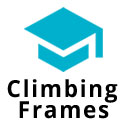From Classroom to Clubhouse: My Journey Teaching English at a Portuguese Golf Club
When I first accepted the offer to teach English at a Portuguese golf club, I had no idea how it would reshape my approach to education and cultural exchange. What started as a chance meeting quickly turned into an innovative classroom where the nuances of golf and language learning intersected.
I found myself adapting lessons to suit a range of learning styles, creating a supportive and engaging environment for students. This role not only refined my teaching methods but also gave me a deeper appreciation for local traditions, making friends for life. Curious about how these two worlds blended so seamlessly? Let me take you through it.
The Unexpected Opportunity
How did I end up teaching English at a golf club, of all places? It started with a serendipitous encounter during my time teaching abroad in Portugal. I was exploring my passions and seeking personal fulfilment when I met a club member keen on improving his English. He introduced me to the golf club community and the many international guests coming over wanting golf packages in Portugal’s top resorts, presenting a unique opportunity to combine my teaching skills with their needs.
Teaching at the club came with its own set of challenges. Language barriers and cultural exchange were at the forefront. But these obstacles also sparked unexpected skills, like finding creative ways to explain concepts and adapting lesson plans on the fly.
It wasn’t just about teaching; it was about overcoming challenges and building community connections.
This experience also opened up numerous networking opportunities. I met individuals from diverse backgrounds, each bringing different perspectives and stories. These interactions were enriching and expanded my professional circle in ways I hadn’t imagined.
The sense of personal fulfilment I gained from seeing my students progress and the mutual respect we developed made the journey worthwhile. In the end, teaching English at the golf club became an unexpected yet rewarding chapter of my life.

Adapting to a New Audience
The unexpected yet rewarding chapter of teaching English at the golf club led to an intriguing new challenge: adapting to a new audience. Unlike a traditional classroom, the club members had varied learning preferences and cultural nuances. To guarantee audience engagement, I tailored my teaching strategies to suit their needs.
First, I focused on understanding their communication styles. Some preferred direct, concise instructions, while others appreciated detailed explanations. Recognizing these differences helped me adapt my approach.
I also incorporated interactive activities like role-playing golf scenarios to break language barriers and make lessons more relatable.
Group dynamics played a significant role. I observed how members interacted and adjusted my techniques accordingly. Smaller groups fostered a safe, intimate environment where everyone felt comfortable participating. This setting allowed for personalized feedback mechanisms, which were essential for continuous improvement.
Cultural nuances were another important consideration. I respected their traditions and incorporated relevant examples to make lessons more engaging. By doing so, I built trust and encouraged open communication.
Merging Golf and Language
Merging golf with language learning opened up a world of exciting possibilities. It allowed me to break down language barriers by incorporating golf terminology into my lessons, making the learning process both fun and practical. My teaching strategies included using real-life scenarios on the golf course, which greatly improved my students’ communication skills.
I found that cultural exchange was a key component. By integrating aspects of Portuguese culture into my instructional methods, the lessons felt more relevant and engaging. My engagement techniques involved hands-on activities, such as role-playing different golfing scenarios, which helped with vocabulary development and pronunciation practice.
Lesson planning became an art form. I’d to guarantee that each session balanced language instruction with practical golf experience. For instance, while teaching the term “birdie,” I’d have students practice saying it correctly before explaining its meaning on the course.
Safety was always a priority. Clear communication and understanding were essential to avoid accidents.
Cultural Insights and Lessons
While teaching English at a golf club, I quickly realized that cultural insights were just as important as language skills. Steering through cultural nuances and overcoming language barriers required more than just textbook knowledge. I immersed myself in local traditions, which enriched my understanding and communication with students.
Understanding social etiquette was vital. For instance, knowing when to use formal versus informal communication styles bridged gaps and fostered respect. Culinary experiences also played a significant role; sharing meals introduced me to regional dialects and local flavours, making lessons more relatable.
Leisure activities at the golf club offered a window into community engagement. Participating in these activities allowed me to observe and respect the balance between work life and leisure, a value deeply ingrained in the Portuguese lifestyle. This balance was essential for building rapport and trust with my students.
Engaging with the community outside the classroom helped me tailor my teaching methods to better suit their needs. I learned that effective teaching isn’t just about language; it’s about embracing the culture and social dynamics that shape communication.
These experiences not only enhanced my teaching but also deepened my appreciation for the rich tapestry of Portuguese life.
Personal and Professional Growth
Through my journey of teaching English at a golf club, I’ve experienced considerable personal and professional growth. Skill development was at the forefront of my experience. I honed new teaching techniques tailored to a diverse group of learners, which greatly bolstered my confidence.
Language immersion played an essential role in my own language skills, enhancing my ability to connect with students. This immersion fostered deeper student engagement, ensuring lessons were both effective and enjoyable.
Networking opportunities at the golf club were abundant. I built professional relationships with club members, fellow staff, and other instructors, which opened doors to mentorship experiences I hadn’t anticipated. These connections were invaluable, offering insights into career shifts that I could consider down the line.
Personal reflections on this journey revealed how much I’d grown. The support I received from my professional relationships was instrumental in my development.
I realized that my role extended beyond teaching English; I was facilitating a cultural exchange, enriching both my students’ lives and my own.
- From Classroom to Clubhouse: My Journey Teaching English at a Portuguese Golf Club - August 25, 2024
- The Impacts of Teaching in Africa - December 5, 2022
- Job Searching In The Digital Age: A Guide - September 3, 2022
- Why Golf is one of the Best Ways to Learn English - June 15, 2022
- How to travel smart with medical conditions - April 24, 2022
- 5 Ways TEFL Teachers can Develop New Skills - December 14, 2021
- How to Calculate the Cost of a Postgraduate Degree - April 11, 2021
- Building a career as a TEFL teacher - December 29, 2016
- Learning English through Art - August 31, 2016
- Does Art Have A Place In The Language Learning Classroom? - August 31, 2016
















